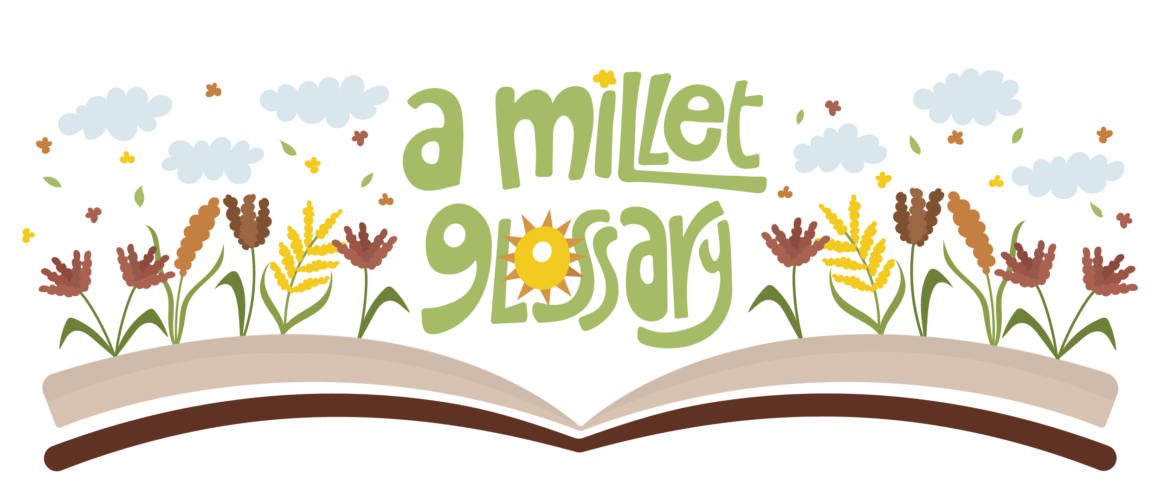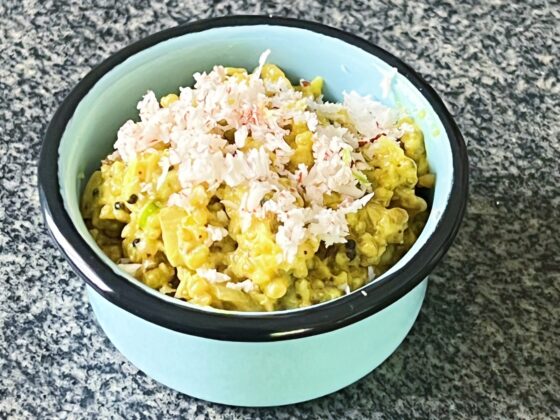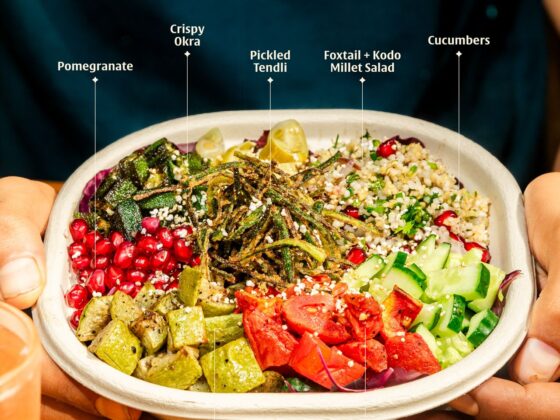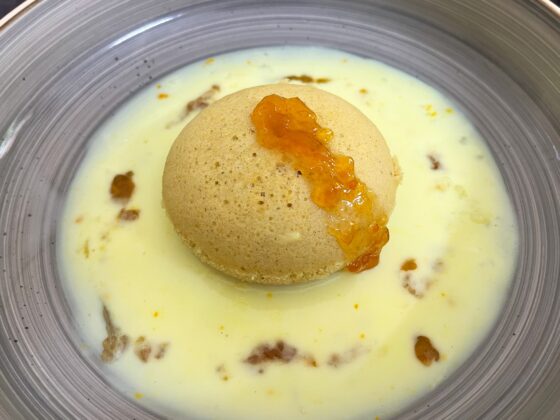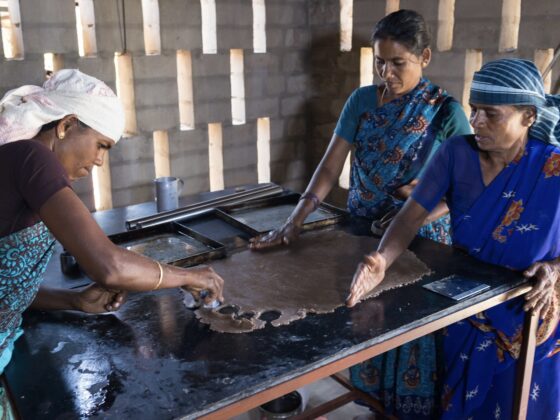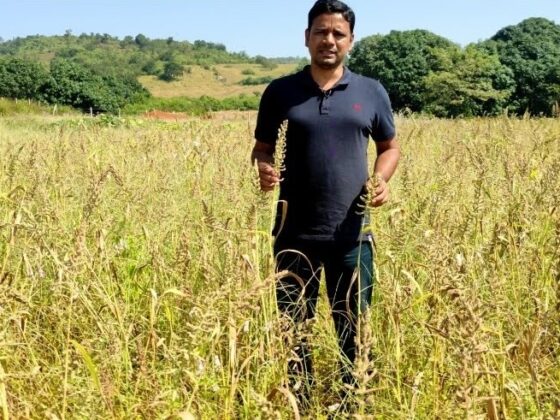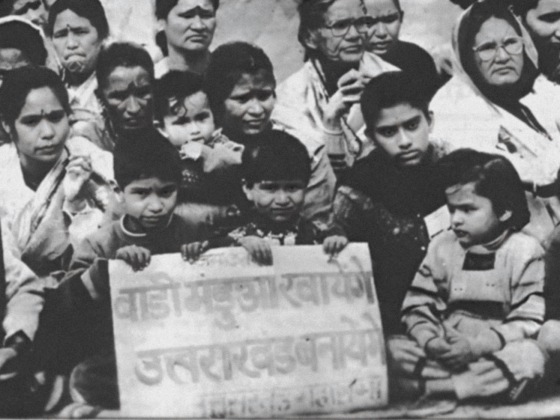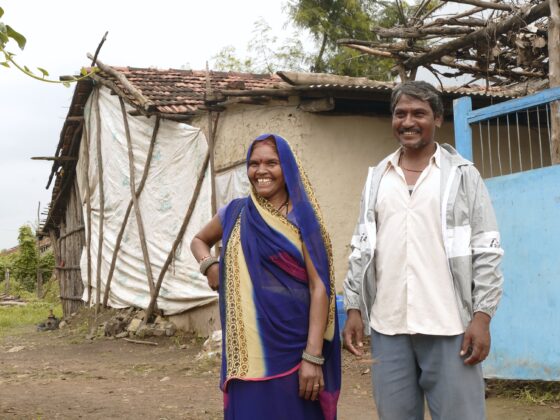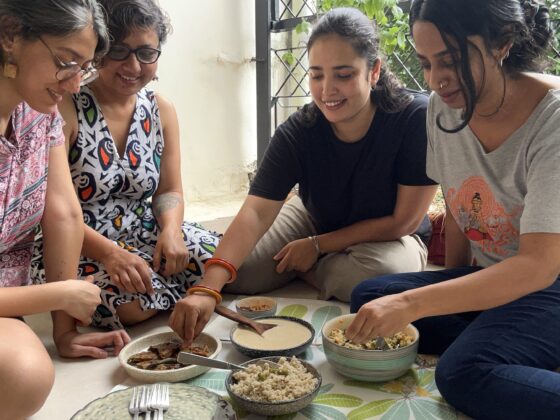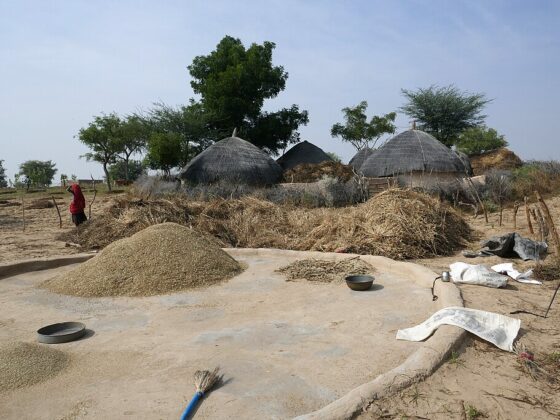With the onslaught of online and offline content, we are inundated with words that we might be familiar with, but do not always understand the context in which they are used. This glossary attempts to demystify some of these terms used around millets.
How ‘ancient’ are millets, really? Why do most mentions of these grains claim they are ‘climate-resilient’? What makes them ‘minimal’, whether in terms of the amount of water they require, or their fertiliser and pesticide needs? A lot of what we read about millets involve such descriptors, but what do they exactly mean?
At the Millet Revival Project, we were curious to know more, so our Climate and Policy Lab team decided to dive deeper to create a beginners’ glossary on millets. Taken together, these words are often why you will see millets referred to as ‘miracle grains’, or a ‘future food’. But they certainly do come with caveats.
Ancient
Millets are dubbed ‘ancient’ because they were domesticated and cultivated in Asia and Africa over 7,000 years ago during the Neolithic period. The timeline, however, varies according to the variety of the millet. The world’s oldest millet remains, now established to be proso millet, were discovered at the early Neolithic site of Cishan in northern China, and date back 8,200 years. Meanwhile, the cultivation of sorghum can be traced back 6,000 years, to northeast Africa.
Parts of the world where millets form the foundations for early agriculture include Africa (western and eastern Africa), northern China, and India. But evidence from anthropological studies suggests that even hunter-gatherers were consuming millets. For example, sorghum was a part of their diets as early as 8000 BC.
Millet cultivation can also be traced to India—including kodo millet (1000 BC), little millet (2500–2000 BC), and browntop millet (3000 BC). Scientists have found that the world’s oldest noodles, made from millet in northwest China, date back 4,000 years.
Several historical texts refer to the crop too. Fan Shen Chih Shu, written in 2800 BC, lists millets as one of five sacred Chinese crops. In the Old Testament (written between 1200 and 165 BC), Ezekiel 4:9 mentions millets as a grain for making bread. The Vedas, Puranas, and other Indian texts like the Kautilya Arthashastra also refer to millets.
Read more about the history of millet cultivation in India in our interview with archaeobotanist Dr. Dorian Fuller.
Climate-resilient
Ecosystems, food systems, lives, and livelihoods are all impacted by human-induced climate change. A resilience to the impact that the human-induced climate crisis has—including heatwaves, drought, rising sea levels, and unpredictable rainfall patterns among many others—means an ability to foresee, be prepared for, and respond adequately to the fallout of this impact.
These drastic phenomena affect the productivity of cereal crops like wheat, maize, and rice, which we largely depend upon for sustenance. Millets are a more hardy grain, and their heat and drought tolerance (from having evolved in dry and arid regions) enables them to be more resilient in the face of changing climate conditions.
However, without significant climate action, beyond a certain point, these stressors will begin to affect millets as well.
Read more about the ways millets are resilient both geographically and culturally.
Heat/Drought tolerant
The ability of a plant to grow and produce yield under high temperatures is its heat tolerance. In general, an increase in temperature, usually 10-15 degrees Celsius above what is normal or ambient for the time, is considered heat shock or heat stress. Research shows that millets, as a species, are more tolerant to this stress, withstanding temperatures as high as 42 degrees Celsius.
Millet cultivation zones in India significantly overlap with arid zones, allowing the grains to thrive in regions with low moisture and high temperatures like the Deccan Plateau, which extends into parts of Telangana, Maharashtra, Andhra Pradesh, Karnataka,and Tamil Nadu.
Studies on pearl millet reveal that structural variations in the plant allow it to cope with high temperatures. It is one of the most widely cultivated millet globally, second to sorghum, and one of the most drought-tolerant among domesticated cereals.
Read about how kutki (little millet) grows in landscapes with very little water.
Minimal Inputs
Agricultural inputs can be of various kinds, the two major ones being fertilisers and pesticides. Fertilisers contain chemical elements like nitrogen, phosphorus, and/or potassium, can be synthetic or natural, and are used to improve yield. For example, urea provides these nutrients to crops, but so does a mulch of the leaves of trees like glyricidia or neem.
Pesticides—an umbrella term for repellants like insecticides, herbicides, fungicides, and rodenticides—can also be synthetically produced or natural, and aid in preventing crop damage by pest attacks.
The use of synthetic chemicals, however, has to be carefully monitored to avoid harming the environment and human health. They are large carbon emitters—in 2018, for example, just the synthetic nitrogen fertiliser supply chain was responsible for 10.6 percent of agricultural emissions and 2.1 percent of global greenhouse gas emissions. Moreover, an overuse or misuse of pesticides is known to bring about soil degradation, water contamination, and health issues for both farmers and consumers.
Since millet have traits that help them utilise nutrients in the atmosphere more effectively, they are able to grow in degraded soils—or soils with salinisation, decreased fertility, or decreased water holding capacity. This reduces the need for excessive fertilisers. In fact, minor millets grown within a diverse cropping system are often grown without inputs, and benefit and increase soil fertility.
Millets also have a higher natural resistance to pests and diseases, compared to other cereal crops. However, they are not immune to diseases and pest attacks. The source of this resistance lies in the chemical and physical make-up of the grain—for example, some sorghum varieties contain ferulic acid and tannins, which inhibit pests and pathogens!
Read about how millets are relatively easy crops to grow, and why.
Rainfed/Less water-intensive
Rainfed crops are those that receive the water required to grow primarily through rain during the monsoon season as opposed to ones that depend upon irrigation. According to the Indian government’s Department of Agriculture and Farmers Welfare, 51 percent of the country’s net sown area, and 40 percent of its food production, occurs under rainfed agriculture.
Millets, grown with companion pulses and oilseeds, are ideal for rainfed agriculture because they require less than 750 mm of annual rainfall, sometimes growing in areas with as little as 200-500 mm of rainfall. This is at least 30 percent less than the rainfall needed to grow some varieties of rice. An exception to this is ragi, which is well suited to grow in areas receiving higher rainfall (between 700-1,200 mm), like the Konkan coast or Odisha.
Why is this so? It has to do with the biology or structure of the millets themselves, adapted as they are to make more efficient use of water. Some of these adaptations include a short growing cycle, short height (excluding sorghum and pearl millet), a small leaf area, dense root systems, and their mechanism for photosynthesis.
Read about how millets were replaced with more water-intensive crops like rice and wheat, and why millets are making a comeback..
Sustainable
Sustainability is the idea that what we produce does not use resources that cannot be replaced, and that we do not damage the environment during this process.
Within food systems specifically, sustainability focuses on food security and nutrition in a way that the economic, social, and environmental foundations to grow food for us and future generations is not compromised in any way.
So, why are millets considered a sustainable food choice? For starters, their environmental impact is low, and their nutritional content is high. When millets are planted as cover crops in rotation with legumes, this cropping cycle increases productivity of the land, aids in water conservation, and improves soil health.
Millets are also often farmed through traditional agricultural practices, which could be economically beneficial to small-scale farmers. Their ability to grow in poor soils reduces the need for chemical inputs, enabling farmers to cut costs while using available resources efficiently.
Read about the place millets occupy in a sustainable future in this comic we published in English and Kannada—one that imagines a hopeful, sustainable food future.
Varnika Gangavalli
Varnika is a project associate with The Locavore, and heads the Climate & Policy Lab at the Millet Revival Project. She is fascinated by nature, and interested in ecological and agricultural research.
Manasa V
Manasa is a legal consultant based out of Amsterdam, and specialises in the human rights impacts of climate change. She is a voracious eater, foodie, and cook, and is trying to incorporate sustainability into her food practices.
Nidhi Neralakatte
Nidhi is an experienced primary and secondary market researcher, hoping to drive impact with research insights. She is interested in food, Climate policy, and sustainability.
Kaveri Sastry
Kaveri has a masters in sustainability science and is a former food policy researcher. Her interests lie at the intersection of food security and sustainability.
Pragnya Senapati
Pragnya is the head of research at Ripple Research, focusing on public policy, behavioural change, and climate action. She hopes to drive individual and systemic change to meet sustainable development goals in food production and consumption.

This article is part of the Millet Revival Project, The Locavore’s modest attempt to demystify cooking with millets, and learn the impact that it has on our ecology. This initiative, in association with Rainmatter Foundation, aims to facilitate the gradual incorporation of millets into our diets, as well as create a space for meaningful conversation and engagement so that we can tap into the resilience of millets while also rediscovering its taste.

Rainmatter Foundation is a non-profit organisation that supports organisations and projects for climate action, a healthier environment, and livelihoods associated with them. The foundation and The Locavore have co-created this Millet Revival Project for a millet-climate outreach campaign for urban consumers. To learn more about the foundation and the other organisations they support, click here.
